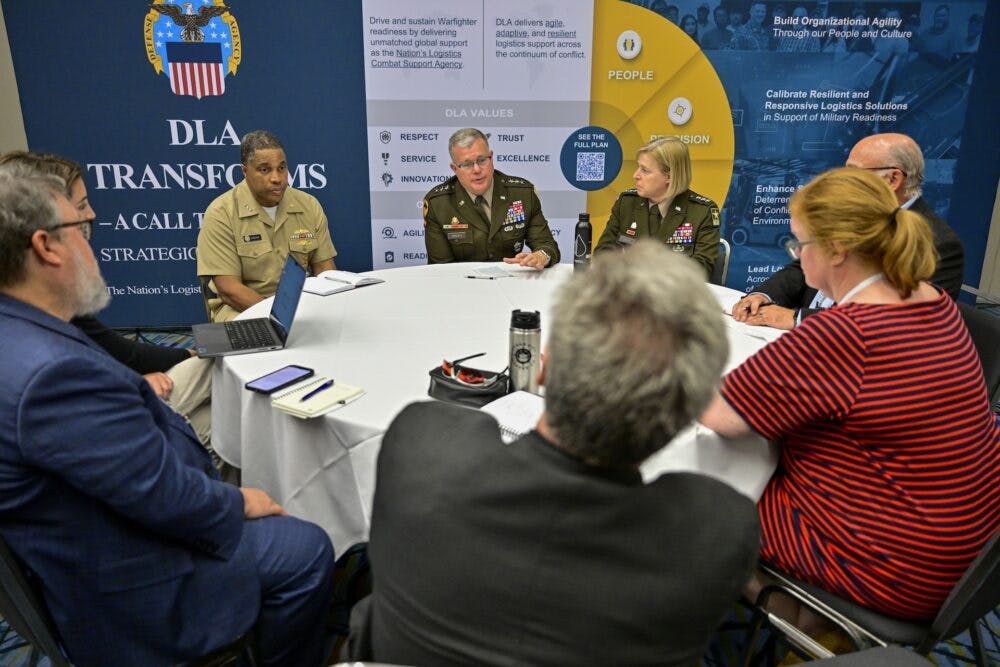CISA is Developing Guidelines For Managing Cyber Supply Chain Risks
CISA is working on steps to help federal agencies address potential supply chain vulnerabilities.

The Cybersecurity and Infrastructure Security Agency (CISA) is developing a guide to help agencies overcome the challenges of managing cyber supply chain risks.
According to Brian Paap, cyber engineering consultant at CISA, the agency has been working on how to approach Cyber Supply Chain Risk Management (CSCRIM) over the past two years.
CISA recently ran a pilot designed to figure out all of the measures required to stand up and sustain a CSCRIM program within federal departments and agencies.
Paap noted CISA has recently developed the Overview and Guidelines document, which combines learnings from NIST 161 and elements of NIST 853, Rev 5 and several other resources.
“What we tried to do is turn all of this ‘what’ that NIST, DOD and industry provided into ‘how’ you do that. Essentially turning the what into the how for standing up and sustaining a CSCRIM program,” Paap said during ATARC’s Overview of Standards and Mandates, Tools and Solutions to Manage Cyber Supply Chain Risks Event.
In 2013, the White House released an executive order for specific agencies to stand up a CSRIM capability, which was followed by the passage of the 2018 Security Act that requested CFO ACT agencies implement their own CSCRIM program.
“In 2020 we held listening sessions with the CFO ACT agencies and they said, can you tell us how to do this and give us boiler plate language to better protect ourselves and so we listened to them and that’s what really drove us into the pilot and where we are today,” Paap said. “There’s a lot more that can be done for the fed govt. And the number one issue across the board is funding and resources.”
Paap also talked about the importance of developing guidelines for overcoming any obstacles to CSCRIM implementation.
“The problems with NIST doctrine is they’re asking you to do things but there is no method of how to do all of those things. Rather than 101 agencies doing it 101 different ways. We want to set the parameters around it and guide them through process of doing this the right way,” Paap said.
During the event Nnake Nweke, director of Cybersecurity Supply Chain Risk Management at the General Services Administration (GSA), talked about the challenges with implementing and managing supply chain risk management.
Some common obstacles are resources, workforce training and supply chain risk control requirements that are set out for vendors.
“Defining requirements is one of the biggest challenges. Trying to strike the right balance between what is really required and what is sufficient. Also, making sure requirements are not impacting their ability to operate. Striking the right balance without sacrificing security is critical,” Nweke said.
Paap said one of the most challenging steps involves securing software provided and managed by second- and third-party vendors.
“I like to look at is as rules before tools. You need to have the methods down before you can perform the actions because you don’t know if the actions you’re performing are correct unless you know what it’s supposed to be based on your mission,” Paap said.
This is a carousel with manually rotating slides. Use Next and Previous buttons to navigate or jump to a slide with the slide dots
-

The Next AI Wave Requires Stronger Cyber Defenses, Data Management
IT officials warn of new vulnerabilities posed by AI as agencies continue to leverage the tech to boost operational efficiency.
5m read -

Federal CIOs Push for ROI-Focused Modernization to Advance Mission Goals
CIOs focus on return on investment, data governance and application modernization to drive mission outcomes as agencies adopt new tech tools.
4m read -

DOD Can No Longer Assume Superiority in Digital Warfare, Officials Warn
The DOD must make concerted efforts to address cyber vulnerabilities to maintain the tactical edge, military leaders said at HammerCon 2025.
4m read -

Tracking CIOs in Trump's Second Term
Stay informed on the latest shifts in federal technology leadership as new CIOs are appointed and President Trump's second term takes shape.
6m read -

Trump Orders Spark Government-Wide Acquisition Overhaul
As Trump pushes for a faster, simpler procurement system, agencies are leveraging AI and adapting strategies to meet new requirements.
5m read -

Inside Oak Ridge National Lab’s Pioneer Approach to AI
Energy Department’s Oak Ridge National Lab transforms AI vulnerabilities into strategic opportunities for national defense.
22m listen -

New Army Acquisition Plan Cites Autonomy, Predictive Analytics
Officials outline how the Army Transformation Initiative signals a broader shift toward efficiency with tech and acquisition reform.
4m read -

AWS Summit: Innovation Accelerates IT Delivery at DOD
Marine Corps Community Services is tackling outdated IT processes with agile development and cutting-edge cloud security to deliver mission-critical capabilities faster.
12m watch -

AWS Summit: NIST Secures High-Performance Computing Against Evolving Threats
NIST’s Yang Guo reveals the broad attack surface of high-performance computing and explains developing guidance and future-proofing security strategies.
9m watch -

Trump Overhauls Federal Cybersecurity with New Executive Order
The new directive aims to strengthen digital defenses while rolling back "burdensome" software requirements and refocusing AI security.
3m read -

AWS Summit: Forging Successful Cloud Modernization Partnerships
Industry leaders share insights on the critical role industry partnerships have in enabling government agencies to navigate procurement challenges for cloud and zero trust solutions.
24m watch Partner Content -

CISA's CVE Program and Why it Matters for Zero Trust
The vulnerability program provides the cybersecurity community visibility into software as part of a key pillar of CISA's zero trust model.
5m read
















